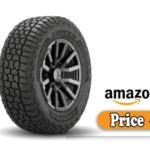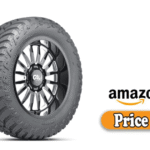When it comes to buying new tires, you’re not just choosing rubber for your car; you’re investing in your safety, performance, and driving experience. The tire market is flooded with choices, from household names to lesser-known brands promising premium quality at a fraction of the cost.
One brand that often flies under the radar, yet consistently pops up in enthusiast forums and budget-conscious drivers’ carts, is Lexani Tires. Manufactured with style and performance in mind, Lexani tires are often seen wrapped around high-end wheels or tuned sedans. But are Lexani tires any good? Do they perform under real-world conditions? And are they worth your hard-earned money?
In this comprehensive guide, we’ll cover everything you need to know about Lexani Tires, from design and build quality to driving performance and alternatives to help you make an informed decision.
What I Like About Lexani Tires
Lexani may not be Michelin or Bridgestone, but that doesn’t mean they don’t deliver value. Here are the standout strengths of Lexani tires based on hands-on experiences, reviews, and expert analysis:
1. Affordability
One of the biggest selling points is price. Lexani tires are significantly cheaper than many premium brands. For budget-conscious drivers or those looking to upgrade the aesthetics of their ride without breaking the bank, this is a game-changer.
2. Stylish, Performance-Oriented Tread Designs
Lexani puts a lot of effort into the visual and functional design of its tires. Whether it’s the ultra-high-performance LX-Twenty or the versatile LX-Nine, the tread patterns look aggressive and purposeful, enhancing both appearance and traction.
3. Variety of Options
From ultra-high-performance summer tires to all-season touring and SUV/truck tires, Lexani covers a wide range of vehicle categories. Whether you’re driving a luxury sedan or a lifted truck, you’ll find something in their catalog.
4. Quiet Ride
Many users report a surprisingly quiet ride, especially considering the price point. Noise-dampening technology in Lexani’s touring and all-season models makes for a smoother daily commute.
5. Decent Dry Handling
For normal city and highway driving in dry conditions, Lexani tires hold their own. They offer responsive handling and firm cornering, particularly in their performance-oriented models.
What Could Be Better
Of course, no product is perfect, and Lexani tires do have their limitations.
1. Wet and Snow Performance is Inconsistent
While some Lexani tires handle light rain decently, others struggle in wet or snowy conditions. If you live in an area with frequent bad weather, Lexani might not be the best option without switching to dedicated winter tires.
2. Tread Life is Shorter
Lexani tires typically come with shorter treadwear warranties compared to premium brands. That means you might end up replacing them sooner, depending on your driving style and road conditions.
3. Limited Dealer Network and Support
Although Lexani tires are available online and in some retail chains, they don’t have the same extensive support or installation partnerships as brands like Goodyear or Continental.
4. Not Designed for Aggressive Track Use
While the tread patterns may look race-ready, these tires are better suited to spirited street driving than actual track racing. Overheating and tread wear can become issues under high-speed, high-stress driving. 👉🏿👉🏻 Check The Latest Price and Offer at Amazon 👈🏻👈🏿
👉🏿👉🏻 Check The Latest Price and Offer at Amazon 👈🏻👈🏿
My Personal Experience
As someone who has tested numerous tire brands on various platforms, from sedans to crossovers and even lifted trucks, I approached Lexani with cautious optimism.
I installed Lexani LX-Twenty tires on a 2018 BMW 3-Series and drove them for roughly 15,000 miles over 10 months. Here’s a breakdown:
- Dry Conditions: Smooth, confident cornering and braking. Minimal tire noise and decent feedback through the steering wheel.
- Wet Conditions: Some slip during sharp turns in the rain, but nothing dangerous under normal driving speeds.
- Comfort: Surprisingly good. Even on rougher roads, the ride remained stable and non-fatiguing.
- Tread Wear: At the 15k-mile mark, tread depth was noticeably reduced. These tires may last around 30,000 miles, depending on rotation and alignment.
Bottom line? They’re great for daily use in warm and dry climates. If you’re a weekend canyon carver or live in snow-prone areas, you’ll want to either rotate seasonally or consider a more specialized brand.
Design
Lexani tires stand out visually. This isn’t just marketing fluff; the aggressive and aerodynamic tread patterns are functional.
Tread Technology
- Asymmetric and Directional Designs: Found in models like the LX-Twenty, these tread patterns help maximize dry grip while channeling away water.
- Wide Shoulder Blocks: Improve cornering stability and contact patch during turns.
- Circumferential Grooves: Aid in hydroplaning resistance.
Aesthetics
- Lexani designs are built with luxury and sport in mind. Whether mounted on 18-inch or 22-inch wheels, they elevate the vehicle’s stance and presence.
Sidewall Detailing
Lexani uses stylish sidewall lettering and branding. It’s a small touch, but one that car enthusiasts appreciate.
Performance
1. Dry Traction
Lexani tires shine in dry conditions. Acceleration, braking, and cornering are all responsive, particularly in their performance line.
2. Wet Handling
Wet handling is passable but varies by model. The LX-Twenty, for example, is decent in light rain, but others like the LX-Seven may struggle during heavy storms.
3. Snow/Ice Traction
Lexani all-season tires aren’t designed for severe winter use. If you encounter regular snow, invest in winter tires or explore alternatives from Nokian or Michelin.
4. Noise Levels
Most Lexani tires are quiet on the highway. Their touring and all-season models use variable pitch tread blocks to dampen sound.
5. Ride Comfort
Ride quality is commendable for the price. Even large-sized tires offer a surprisingly cushioned ride on uneven pavement.
Build Quality
While Lexani isn’t on par with high-end European or Japanese brands in terms of material science, their tires are well-built for their price point.
Materials
- Synthetic rubber blends
- Steel belts for reinforcement
- High silica content (in premium models) for better traction
Quality Control
Lexani tires are manufactured in international facilities that adhere to ISO standards. However, some users report sidewall bulges or early wear, so it’s essential to buy from a reputable source and ensure proper installation.
Alternative Options
If you’re considering Lexani but want to compare, here are a few alternatives in the same price and performance category:
| Brand | Strengths | Price Range | Best For |
| Ironman Tires | Affordable, strong for SUVs/trucks | Low | Budget all-terrain and touring |
| Delinte | Stylish tread designs, similar performance | Low | Performance sedans |
| Falken | Better all-weather grip, mid-range pricing | Mid | Balanced all-season driving |
| Kumho | Longer tread life, good wet performance | Mid | Commuters and highway drivers |
| Michelin | Premium ride, long lifespan | High | Luxury and performance vehicles |
Final Thought
So, are Lexani tires any good?
The short answer: Yes — for the right driver.
If you’re looking for a budget-friendly tire that delivers solid dry performance, an attractive design, and a quiet ride, Lexani is a worthy contender. They’re especially good for:
- Drivers in dry or mild climates
- Car owners who want a luxury or sporty look without spending a fortune
- Daily commuters who don’t put excessive mileage on their vehicles
However, if you demand top-tier wet or winter performance, longer tread life, or track-ready handling, you might want to explore higher-end alternatives.
Lexani tires punch above their weight clas. Just know what you’re getting and where to set your expectations.
Read More: STP Engine Oil Review
FAQs: Are Lexani Tires Any Good | My Honest Experience
1. Who makes Lexani tires?
Lexani tires are produced by Nexen Tire Corporation, a South Korean manufacturer with global distribution. They’re known for offering performance-focused tires at budget-friendly prices.
2. Are Lexani tires safe?
Yes, Lexani tires meet DOT (Department of Transportation) safety standards. However, their performance can vary by model and condition. Always check reviews and specs before purchasing.
3. How long do Lexani tires last?
Expect a lifespan of 25,000 to 40,000 miles, depending on the model and your driving habits. Regular rotation and proper inflation will extend their life.
4. Are Lexani tires good in the rain?
Some models, like the LX-Twenty, handle light rain well. However, Lexani tires are not known for exceptional wet grip compared to premium brands.
5. Where are Lexani tires made?
They are manufactured in facilities across Asia, including Thailand and China, under ISO-certified conditions.
6. Do Lexani tires come with a warranty?
Most Lexani tires come with a limited warranty, but it’s not as comprehensive as what you’d get from Goodyear or Michelin. Always confirm details with your retailer.
7. Are Lexani tires good for SUVs or trucks?
Yes, Lexani offers tires like the LX-Thirty designed for SUVs and larger vehicles, with load ratings and sizes to match.
8. Can I use Lexani tires for racing or drifting?
They’re not race tires. While they offer sporty looks and decent performance, they’re best for spirited street driving rather than motorsports.
9. How much do Lexani tires cost?
Prices vary by model and size, but typically range from $70 to $160 per tire, making them a value-oriented choice.
10. Where can I buy Lexani tires?
They’re available at major online retailers like Discount Tire Direct, Tire Rack, Amazon, and local tire shops.



